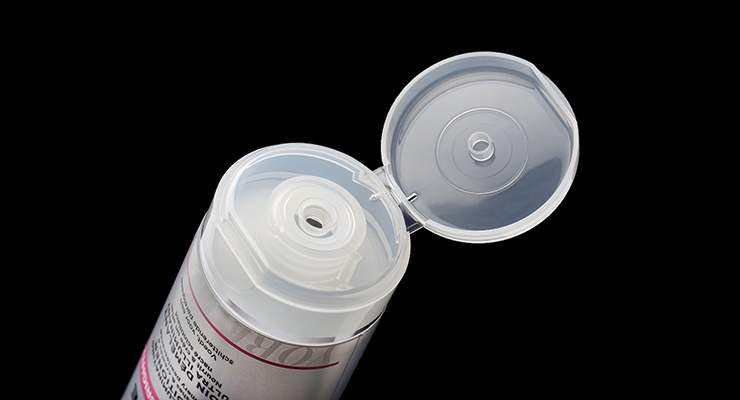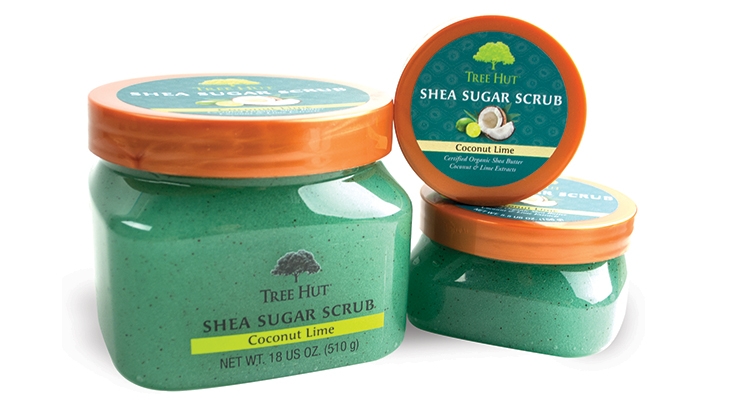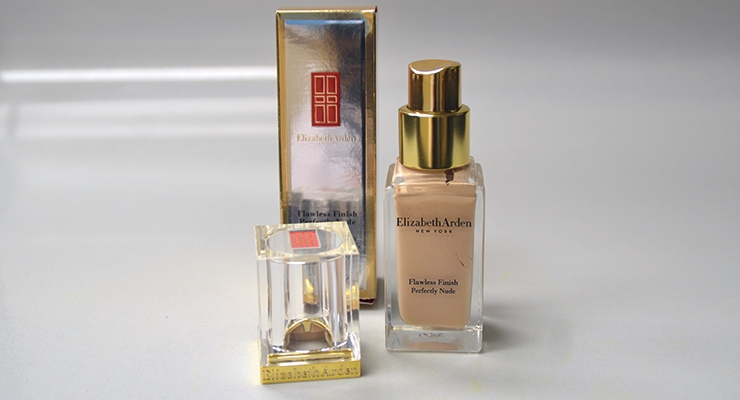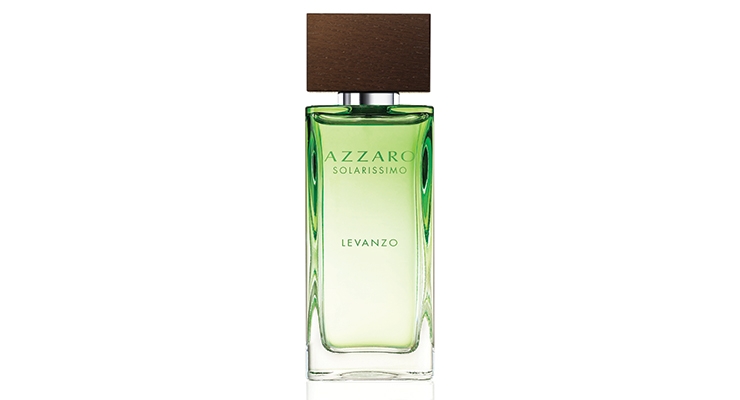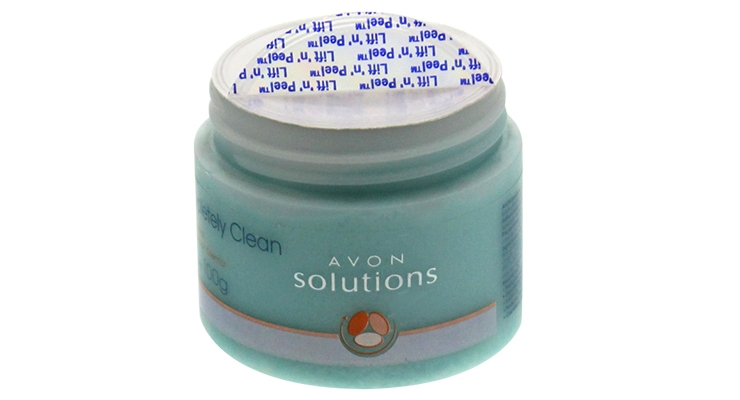Joanna Cosgrove, Contributing Editor07.26.17
It’s hard to underestimate the importance of a well-chosen closure. As a customizable extension of a package design identity, closures are also functionally important components that both preserve product integrity and facilitate a product’s use by consumers.
The global caps and closures market is projected to grow from $49.8 to $68.7 billion USD by 2021 (CAGR +5.6%), according to a recent study from MarketsandMarkets. Driven primarily by growth in the food, beverage and healthcare categories, caps and closures are helping meet an intensified consumer demand for enhanced product safety. Plastics continue to be the raw materials of choice for closures, followed by metal. Plastics closures, especially those made of polypropylene (PP), are inherently light weight and relatively inexpensive to produce. They’re also stress tolerant and resistance to aspects of formulas that might react with other materials.
Viva IML Tubes, Toronto, recently launched a clever new low profile flip top cap engineered to overcome a specific and pesky problem: the dreaded shower splash. The 100% polypropylene Vented Low Profile flip top is equipped with a nifty drainage hole that prevents water from accumulating in the cap then splashing out on the unsuspecting consumer later. The screw-on caps have been adopted by all John Frieda shampoos and conditioners and were customized with a hot stamped ring to add a premium yet affordable aesthetic.
Bruno Lebeault, marketing director North America, says the decreased profile of the closures offers two distinct benefits for brands like John Frieda. “The overall tube height can be reduced and used in more places with limited shelf height, a big improvement for the consumer experience, [as well as] a more sustainable solution with less material.”
Olcott Plastics, St. Charles, IL, recently modified an existing plastic cap it had provided to its customer, Tree Hut, for the brand’s line of body scrubs. “We have previously supplied the customer with an 89mm smooth top and smooth side closure that was gated from the side,” says Olcott’s Joe Brodner, president. “The colorant has a metallic in it so it is susceptible to flow lines. The customer wanted a better appearance on the sidewalls and as such we developed an 89mm cap with an inside gate on the top of the closure.”
The new closure, which is foam-lined, provides for a more even flow on the top and sides of the metallic colorant. “It is a high-quality, low-cost option to metallizing or other decorating methods that are significantly more expensive and, [in the end it’s] a more aesthetically pleasing product.”
Surlyn resin is typically most at home in fragrance closures, however Lombardi Design & Manufacturing, Freeport, NY, took advantage of the material’s unique properties to develop a custom cap-collar assembly for Elizabeth Arden’s Flawless Finish liquid foundation offered in Perfectly Nude and Perfectly Satin variants makeup package.
“Elizabeth Arden wanted clarity, and a heavy walled clear cap was ideal for Surlyn resin,” comments Jack Albanese, Lombardi’s director of new business development. When space around the bottle neck became limited, Lombardi designed a way to make the bottle collar part of the cap assembly, molding the Surlyn cap and the metallized polypropylene collar at its Long Island, NY, factory. “The closure friction fits around the neck of the pump. The outside center injection gate is hidden in a recess behind a custom decorated aluminum nameplate on top.”
From Plastic to Wood
The ongoing penchant for “natural” continues to be realized in the packaging segment, particularly as it relates to caps and closures made of or embellished with wood.
“Wood as a packaging material has a very competitive advantage over other materials, such as personalization, almost zero mold cost, reduced time to market, and the enhancement of sustainability and luxury at the same time,” comments Angel Pujolasos, engineer and CEO, Pujolasos Wood & Pack of Barcelona. The company produced nearly 37 million wooden caps for fragrance, color cosmetic, personal care and nail enamel products in 2017, using sustainably sourced, FSC- and PEFC-certified “noble” woods such as ash, maple, oak and cherry.
Pujolasos manufactured a custom PEFC ash wood cap for Azzaro Solarissimo that’s characterized by an HD laser application and deep “wenge” color. “The color chosen specifically for this product maintains the distinctive elegance of the brand, combining Mediterranean essences with Azzaro’s characteristic fresh, cosmopolitan touch,” Pujolasos says.
Barcelona-based Quadpack crafted a beautifully simple wooden cap for Lalique Encre Noire à l’Extrême Fragrances for men, available as 50ml and 100ml Eau de Parfum. The cap’s distinctively masculine, hewn look was produced by Technotraf Wood Packaging (Quadpack’s Manufacturing Division in Spain) to deliberately underscore aspects of the fragrance.
“The fragrance’s powerful woodsy blend of cypress and vetiver is reflected in the wooden cap,” explains Isabelle de Maistre, Quadpack’s fragrance category manager. “The strong relationship between the scent and the packaging creates a holistic experience of the product that involves all the senses. The ash wood cap feels strong yet natural, with a perceptible grain pattern that makes each and every one unique.”
The bespoke cap is custom-made of PEFC-certified ash sourced from sustainably managed forests. It has a click fit for an FEA 15 pump. The Lalique logo is subtly debossed on the top of the cap, which is stained black, enhancing the signature inkwell design of the bottle.
Quadpack’s Technotraf wood factory also crafted the wooden cap for Guerlain’s L’Art et la Matière feminine fragrance, a scent that emphasizes “noble raw materials” and “refinement down to the last detail.”
“The bottles feature clean, contemporary lines, decorated with a golden metal plaque, like the spine of a precious book, [and] the wooden cap adds a touch of pure sophistication,” says de Maistre. “Made of beech from certified sustainable forests, it is lacquered a beautiful amethyst color and finished with a matte varnish. Guerlain is one of the early adopters of wood in its packaging, quick to appreciate the material’s versatility and support for the brand message.”
Metal & Metal Accents
The cool, clean look of metal can add an industrial or modern accent to a package, and extra durability to a cap or closure.
“We’ve seen a large increase in interest in brushed finished closures, more of an industrial look and people really like how the brush finishing highlights their products without the heavy expense of polishing or anodizing,” says Anthony Di Maio, chief operating officer, Cameo Metal Products Inc., Brooklyn, NY. “More and more customers have been adapting our low-cost brush finish and adding decorating techniques and stylized embossing to increase brand exposure while keeping packaging costs down.”
Cameo Metal recently executed a custom brushed silver nail polish closure with custom side embossing for Anise Cosmetics. The closure is comprised of an aluminum shell embossed with the company logo on the side, with a polypropylene inner closure designed to accommodate the nail lacquer brush. “It’s a high-end looking product with moderate pricing for the mass markets that they service,” DeMaio says.
Swiss bio-cosmetics firm Laboratoires Mined’Or, selected a metal-accented closure to imply a professional aesthetic. Cellular Relaxing Treatment is the brand’s latest serum and is formulated for use by beauty professionals to moisturize and address the sensitivities and deficiencies of all skin types. The packaging, manufactured by Barcelona-based Virospack, features a glint of metal to convey an upscale edge. Consisting of a dropper with a 3ml capacity vial, the small format is an appropriate size for delivering the highly concentrated formula to beauty professionals for use. The standard bottle is transparent and embellished with clean, white print that allows the pipette and the formula to remain visible through the bottle. The applicator is a standard classic dropper with white rubber bulb and a silver metallized cap.
Whether they’re fabricated out of plastic, wood or metal, caps and closures play an important part in the fun–and functionality–of every product they top.
Guala Closures UK Ltd., a producer of closures for spirits, was recently awarded the Vibes Award for Innovation 2016 and a key factor that contributed to the company securing the honor was its investment in PST Line technology from Tapematic.
The PST Line is a fully automated in-line system that streamlines the time-consuming aspects of pre-treatment, base coating, metallizing and top coating, inspecting and off-loading tasks. The unique design is targeted to minimize environmental impact while delivering a cost savings per unit for decoration. For Guala, this meant a 58% reduction in VOC usage (from 36 tons to 15 tons), a 92% reduction in wastewater (from 6,000 liters to 500 liters), and a 75% increase in the number of parts produced (from 40,000 to 70,000), requiring only 25 liters of paint.
Tony Denning, president of Tapematic USA Inc., Orlando, FL, says the technology is equally applicable for use with closures designed for the cosmetic and personal care sector too. “Our system is approximately 50-75% more efficient in terms of electrical consumption compared with the ‘traditional’ lines for cosmetic metallizing,” he notes.
The Population Reference Bureau predicts that the number of Americans aged 65 and older will rise from 46 million today to over 98 million by 2060, impacting all industries, from health care to cosmetics. For the packaging industry, this presents several unique challenges, especially as it relates to creating caps and closures that protect product integrity while being senior-friendly at the same time.
According to John Brown, vice president, global marketing at Selig Group, Naperville, IL, one technology that can meet these objectives is induction cap sealing, an approach that uses a multi-layer laminated liner with an aluminum foil, which is bonded to the container rim by means of electromagnetic induction heating.
“Liners are generally available in one- or two-piece structures,” he explains. “One piece liners are suitable for products that do not need to be resealed, whereas two-piece liners include a secondary backing board that allows the container to be safely resealed after the removal of the original seal. The upper layers can also be printed to provide branding or graphics.”
Achieving a perfect seal is critical and depends on three factors: pressure, heat and time. Correct pressure results in an evenly sealed liner around the lip of the container, and is influenced by factors such as the design of the threads on the closure and container, and the torque settings of the capping equipment.
The amount of heat applied to the liner is dependent on the size and characteristics of the induction elements, the line speed and the air gap between the elements and the closure. “The seal liner needs sufficient time under the induction coil to be heated to the correct temperature, to ensure that the sealing surface melts and subsequently bonds effectively to the land area of the container,”
Brown says. “The liner must be applied evenly around the lip of the container, as incomplete contact will cause overheating, leading to a poor seal, which can cause product contamination or leakage.”
Timing during heating is the third factor, and a securely bonded seal depends on a correct heat level and resting time.
“The interactions between heat, pressure and time mean that finding the right set of operating conditions to guarantee a reliable and easily peel-able seal requires careful trials under production conditions,” says Brown. “Once manufacturers understand the characteristics of their process then induction cap sealing offers a reliable solution to the challenge of easy-to-open cosmetics packaging for old and young alike.”
For cosmetic and personal care applications, Selig’s Top Tab 2 is an easy-open tab consisting of a twin polyester construction that’s designed to be ergonomically easy to grip, flexible and extremely strong – a combination that’s advantageous to older consumers. Available with a variety of standard prints the Top Tab 2 print design can be tailored to complement diverse target audiences. Product integrity is protected and the seal is supported by 360° polyester film, which prevents distortion and improves its easy open functionality, without leaving behind any unsightly residue on the package.
The global caps and closures market is projected to grow from $49.8 to $68.7 billion USD by 2021 (CAGR +5.6%), according to a recent study from MarketsandMarkets. Driven primarily by growth in the food, beverage and healthcare categories, caps and closures are helping meet an intensified consumer demand for enhanced product safety. Plastics continue to be the raw materials of choice for closures, followed by metal. Plastics closures, especially those made of polypropylene (PP), are inherently light weight and relatively inexpensive to produce. They’re also stress tolerant and resistance to aspects of formulas that might react with other materials.
Viva IML Tubes, Toronto, recently launched a clever new low profile flip top cap engineered to overcome a specific and pesky problem: the dreaded shower splash. The 100% polypropylene Vented Low Profile flip top is equipped with a nifty drainage hole that prevents water from accumulating in the cap then splashing out on the unsuspecting consumer later. The screw-on caps have been adopted by all John Frieda shampoos and conditioners and were customized with a hot stamped ring to add a premium yet affordable aesthetic.
Bruno Lebeault, marketing director North America, says the decreased profile of the closures offers two distinct benefits for brands like John Frieda. “The overall tube height can be reduced and used in more places with limited shelf height, a big improvement for the consumer experience, [as well as] a more sustainable solution with less material.”
Olcott Plastics, St. Charles, IL, recently modified an existing plastic cap it had provided to its customer, Tree Hut, for the brand’s line of body scrubs. “We have previously supplied the customer with an 89mm smooth top and smooth side closure that was gated from the side,” says Olcott’s Joe Brodner, president. “The colorant has a metallic in it so it is susceptible to flow lines. The customer wanted a better appearance on the sidewalls and as such we developed an 89mm cap with an inside gate on the top of the closure.”
The new closure, which is foam-lined, provides for a more even flow on the top and sides of the metallic colorant. “It is a high-quality, low-cost option to metallizing or other decorating methods that are significantly more expensive and, [in the end it’s] a more aesthetically pleasing product.”
Surlyn resin is typically most at home in fragrance closures, however Lombardi Design & Manufacturing, Freeport, NY, took advantage of the material’s unique properties to develop a custom cap-collar assembly for Elizabeth Arden’s Flawless Finish liquid foundation offered in Perfectly Nude and Perfectly Satin variants makeup package.
“Elizabeth Arden wanted clarity, and a heavy walled clear cap was ideal for Surlyn resin,” comments Jack Albanese, Lombardi’s director of new business development. When space around the bottle neck became limited, Lombardi designed a way to make the bottle collar part of the cap assembly, molding the Surlyn cap and the metallized polypropylene collar at its Long Island, NY, factory. “The closure friction fits around the neck of the pump. The outside center injection gate is hidden in a recess behind a custom decorated aluminum nameplate on top.”
From Plastic to Wood
The ongoing penchant for “natural” continues to be realized in the packaging segment, particularly as it relates to caps and closures made of or embellished with wood.
“Wood as a packaging material has a very competitive advantage over other materials, such as personalization, almost zero mold cost, reduced time to market, and the enhancement of sustainability and luxury at the same time,” comments Angel Pujolasos, engineer and CEO, Pujolasos Wood & Pack of Barcelona. The company produced nearly 37 million wooden caps for fragrance, color cosmetic, personal care and nail enamel products in 2017, using sustainably sourced, FSC- and PEFC-certified “noble” woods such as ash, maple, oak and cherry.
Pujolasos manufactured a custom PEFC ash wood cap for Azzaro Solarissimo that’s characterized by an HD laser application and deep “wenge” color. “The color chosen specifically for this product maintains the distinctive elegance of the brand, combining Mediterranean essences with Azzaro’s characteristic fresh, cosmopolitan touch,” Pujolasos says.
Barcelona-based Quadpack crafted a beautifully simple wooden cap for Lalique Encre Noire à l’Extrême Fragrances for men, available as 50ml and 100ml Eau de Parfum. The cap’s distinctively masculine, hewn look was produced by Technotraf Wood Packaging (Quadpack’s Manufacturing Division in Spain) to deliberately underscore aspects of the fragrance.
“The fragrance’s powerful woodsy blend of cypress and vetiver is reflected in the wooden cap,” explains Isabelle de Maistre, Quadpack’s fragrance category manager. “The strong relationship between the scent and the packaging creates a holistic experience of the product that involves all the senses. The ash wood cap feels strong yet natural, with a perceptible grain pattern that makes each and every one unique.”
The bespoke cap is custom-made of PEFC-certified ash sourced from sustainably managed forests. It has a click fit for an FEA 15 pump. The Lalique logo is subtly debossed on the top of the cap, which is stained black, enhancing the signature inkwell design of the bottle.
Quadpack’s Technotraf wood factory also crafted the wooden cap for Guerlain’s L’Art et la Matière feminine fragrance, a scent that emphasizes “noble raw materials” and “refinement down to the last detail.”
“The bottles feature clean, contemporary lines, decorated with a golden metal plaque, like the spine of a precious book, [and] the wooden cap adds a touch of pure sophistication,” says de Maistre. “Made of beech from certified sustainable forests, it is lacquered a beautiful amethyst color and finished with a matte varnish. Guerlain is one of the early adopters of wood in its packaging, quick to appreciate the material’s versatility and support for the brand message.”
Metal & Metal Accents
The cool, clean look of metal can add an industrial or modern accent to a package, and extra durability to a cap or closure.
“We’ve seen a large increase in interest in brushed finished closures, more of an industrial look and people really like how the brush finishing highlights their products without the heavy expense of polishing or anodizing,” says Anthony Di Maio, chief operating officer, Cameo Metal Products Inc., Brooklyn, NY. “More and more customers have been adapting our low-cost brush finish and adding decorating techniques and stylized embossing to increase brand exposure while keeping packaging costs down.”
Cameo Metal recently executed a custom brushed silver nail polish closure with custom side embossing for Anise Cosmetics. The closure is comprised of an aluminum shell embossed with the company logo on the side, with a polypropylene inner closure designed to accommodate the nail lacquer brush. “It’s a high-end looking product with moderate pricing for the mass markets that they service,” DeMaio says.
Swiss bio-cosmetics firm Laboratoires Mined’Or, selected a metal-accented closure to imply a professional aesthetic. Cellular Relaxing Treatment is the brand’s latest serum and is formulated for use by beauty professionals to moisturize and address the sensitivities and deficiencies of all skin types. The packaging, manufactured by Barcelona-based Virospack, features a glint of metal to convey an upscale edge. Consisting of a dropper with a 3ml capacity vial, the small format is an appropriate size for delivering the highly concentrated formula to beauty professionals for use. The standard bottle is transparent and embellished with clean, white print that allows the pipette and the formula to remain visible through the bottle. The applicator is a standard classic dropper with white rubber bulb and a silver metallized cap.
Whether they’re fabricated out of plastic, wood or metal, caps and closures play an important part in the fun–and functionality–of every product they top.
Guala Closures UK Ltd., a producer of closures for spirits, was recently awarded the Vibes Award for Innovation 2016 and a key factor that contributed to the company securing the honor was its investment in PST Line technology from Tapematic.
The PST Line is a fully automated in-line system that streamlines the time-consuming aspects of pre-treatment, base coating, metallizing and top coating, inspecting and off-loading tasks. The unique design is targeted to minimize environmental impact while delivering a cost savings per unit for decoration. For Guala, this meant a 58% reduction in VOC usage (from 36 tons to 15 tons), a 92% reduction in wastewater (from 6,000 liters to 500 liters), and a 75% increase in the number of parts produced (from 40,000 to 70,000), requiring only 25 liters of paint.
Tony Denning, president of Tapematic USA Inc., Orlando, FL, says the technology is equally applicable for use with closures designed for the cosmetic and personal care sector too. “Our system is approximately 50-75% more efficient in terms of electrical consumption compared with the ‘traditional’ lines for cosmetic metallizing,” he notes.
The Population Reference Bureau predicts that the number of Americans aged 65 and older will rise from 46 million today to over 98 million by 2060, impacting all industries, from health care to cosmetics. For the packaging industry, this presents several unique challenges, especially as it relates to creating caps and closures that protect product integrity while being senior-friendly at the same time.
According to John Brown, vice president, global marketing at Selig Group, Naperville, IL, one technology that can meet these objectives is induction cap sealing, an approach that uses a multi-layer laminated liner with an aluminum foil, which is bonded to the container rim by means of electromagnetic induction heating.
“Liners are generally available in one- or two-piece structures,” he explains. “One piece liners are suitable for products that do not need to be resealed, whereas two-piece liners include a secondary backing board that allows the container to be safely resealed after the removal of the original seal. The upper layers can also be printed to provide branding or graphics.”
Achieving a perfect seal is critical and depends on three factors: pressure, heat and time. Correct pressure results in an evenly sealed liner around the lip of the container, and is influenced by factors such as the design of the threads on the closure and container, and the torque settings of the capping equipment.
The amount of heat applied to the liner is dependent on the size and characteristics of the induction elements, the line speed and the air gap between the elements and the closure. “The seal liner needs sufficient time under the induction coil to be heated to the correct temperature, to ensure that the sealing surface melts and subsequently bonds effectively to the land area of the container,”
Brown says. “The liner must be applied evenly around the lip of the container, as incomplete contact will cause overheating, leading to a poor seal, which can cause product contamination or leakage.”
Timing during heating is the third factor, and a securely bonded seal depends on a correct heat level and resting time.
“The interactions between heat, pressure and time mean that finding the right set of operating conditions to guarantee a reliable and easily peel-able seal requires careful trials under production conditions,” says Brown. “Once manufacturers understand the characteristics of their process then induction cap sealing offers a reliable solution to the challenge of easy-to-open cosmetics packaging for old and young alike.”
For cosmetic and personal care applications, Selig’s Top Tab 2 is an easy-open tab consisting of a twin polyester construction that’s designed to be ergonomically easy to grip, flexible and extremely strong – a combination that’s advantageous to older consumers. Available with a variety of standard prints the Top Tab 2 print design can be tailored to complement diverse target audiences. Product integrity is protected and the seal is supported by 360° polyester film, which prevents distortion and improves its easy open functionality, without leaving behind any unsightly residue on the package.

